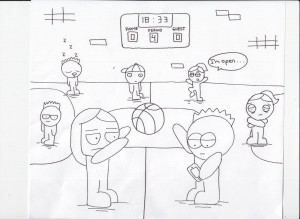
Cricket, fistball, flutterguts and ringball all have one thing in common: they aren’t standard sports popularized in the U.S. These other sports exist all over the globe, and they are not only just as engaging, but provide the opportunity to explore other cultures.
The wealth of different sports America possesses become lost in a sea of lacrosse sticks, baseball bats and soccer balls. They drown in these “big money” sports that have become glorified as a result of the media. The youth sports industry has amounted to billions of dollars a year in training, travel expenses and equipment, often in hopes of a scholarship. However, opportunities are scarce. For example, the odds of a high school soccer player receiving a full ride to a Div I or II School are one in 90, according to research conducted by the University of Michigan
However, opportunities are scarce. For example, the odds of a high school soccer player receiving a full ride to a Division I or II School are one in 90, according to research conducted by the University of Michigan.
Year after year, season after season, students stick to these same sports; 40% of adolescent boys play basketball and football, and 25% of adolescent girls play basketball, according to a study done by the American Tennis Association based on a survey of 50,000 students a year from 2006-2010.
Around age 13, however, 70 percent of kids suddenly drop out of organized youth sports, right before high school, according to the U.S. Centers for Disease Control. These standard sports begin to lose their previous appeal, and with a growing number of students dropping out of sports and a climbing obesity rate, an engaging Physical Education class becomes increasingly vital.
According to the World Sports Encyclopedia (2003) there are 8,000 indigenous sports and sporting games in existence.
With such a wide variety of options, Physical Education programs have the potential to expand their curricula beyond basic sports such as soccer and basketball and capture the diversity within the school’s population. They also have the opportunity to inspire students who don’t participate in traditional sports to find a new type of physical activity they enjoy.
Currently, Marshall’s P.E. program is exploring pickleball, a sport invented in Seattle by Congressman Joe Pritchard and businessman Bill Bell that encapsulates elements of tennis, ping pong and badminton. In the past, there have been only a few unique sports that P.E. classes have dabbled in, and teaching pickleball is a potential key to opening up a whole new world of varied athletics.
After all, it’s referred to as Physical Education.
